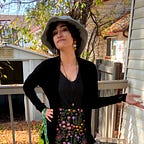On Jules Verne’s Paris in the Twentieth Century and the decline(?) of the Arts
A Commentary and Observation
“Must I abandon all hope at the door?” (Verne, 55).
I never thought I’d be living in a world where one of my favorite dystopian novels is actually coming true, little by little. It is a weird time in human history, and, while I wish the plot of the book was merely fantasy, it is sort of nice to have something relatable of art to hold onto.
Paris in the Twentieth Century was written in the 1860s, imagining what the later 1960s might be like. To those who are unfamiliar, this book wasn’t published until the 1990s, as Verne’s publishers did not think the book would do well in his time.
The protagonist, Michel, is a young poet who has just graduated school with a degree in classics and literature. In this imagined 1960s, though, the arts have become obsolete, with technology and machines and numbers dominating Paris (sound familiar?). Throughout this bleak future, Michel strives to find where he fits in, finding few artists like him trying to eke out a living. In the end, he becomes lost in the electrical, unfeeling streets of 1960s Paris.
Jules Verne’s 1960s Paris is a land devoid of imagination and emotion — which is not how Verne always envisioned futuristic periods of Earth. While we are not there yet in our timeline, there are certain things that make it seem like such a world is possible, and it would not take too long. I am…
